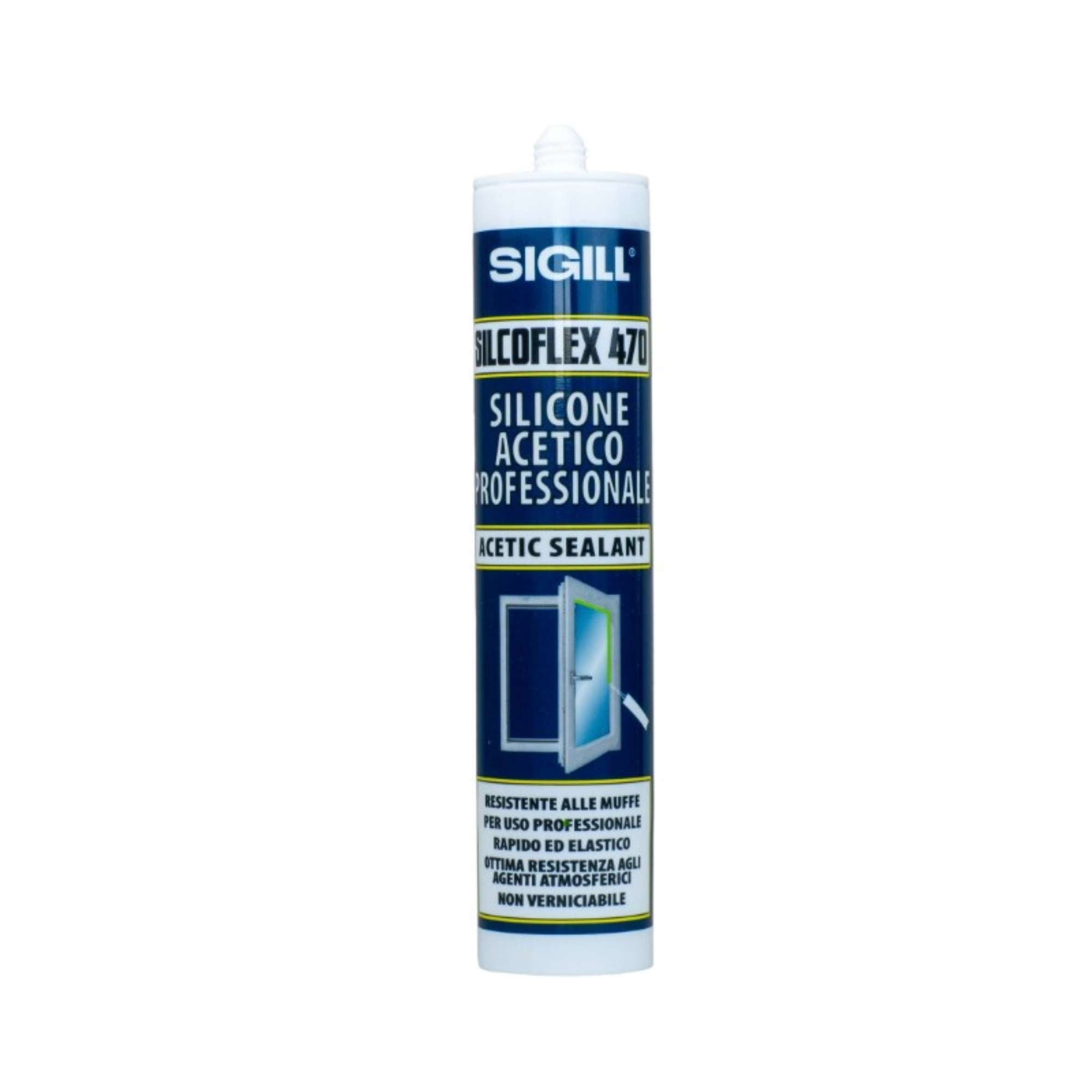Description
Single-component acetic silicone Silcoflex 470 Black 280ml - NPT 0006234
Single-component silicone sealant with acetic cross-linking.
Mold-resistant.
Silcoflex 470 is a single-component, acetic-cross-linking silicone sealant for general sealing.
It cures at room temperature under the action of atmospheric moisture to create a permanently flexible silicone elastomer with high chemical and aging resistance.
Certified and tested according to:
- EN 15651 - 1: Type F - EXT - INT - CC
- EN 15651 - 3: Type S
- ISO 846 microbial tests for plastics
- EMICODE EC1
Fields of application
Indoor and outdoor elastic joints.
Building applications in high humidity areas, such as bathroom rooms.
Suitable for elastic joints between glass, metals, ceramics.
Not suitable for porous surfaces.
Resists mold, bacteria and chemicals used for cleaning and hygiene.
Features
- Fast crosslinking and skin formation
- Adheres excellently to glass and vitrified surfaces, plastics and coatings
- Suitable for areas of high humidity
- Resistant to mold and bacteria
- Does not drip
- Excellent resistance to weathering, UV and aging
- Easy extrusion at low (+5°C) and high (+40°C) temperatures
- Flexible at low (-40°C) and high (+100°C) temperatures
Technical characteristics
| Appearance | Thixotropic paste without casting |
| Color | Black |
| Chemical nature | Acetically cross-linked silicone |
| Polymerization | Hygrohardening |
| Thickness curing [mm] (NPT Method 07) (24h - 23°C and 50% RH) | ca. 2.0 |
| Shore A Hardness (ISO 868) | ca. 21 |
| Specific gravity [g/cm³] (NPT Method 06) (23°C and 50% RH) | ca. 0.98 |
| Skin time[min] (NPT Method 17) (23°C and 50% RH) | ca. 0.20 |
| Elastic modulus at 100% [N/mm2 ] (ISO 8339) | ca. 0.4 |
| Tensile strength [N/mm2 ] (ISO 8339) | ca. 0.6 |
| Tear strength [N/mm2 ] (ISO 34) | ca. 4.0 |
| Elongation at break [%] (ISO 8339) | ca. 200 |
| Joint movement capacity [%] (ASTM C920) | ± 12.5 with respect to the width of the joint |
| Application temperature [°C] | +5 to +40 |
| Thermal resistance [°C] | -40 to +100 |
Application
Surfaces must be perfectly clean, dry and free of dust and grease.
Bonding materials should be treated according to NPT application guidelines.
Preliminary adhesion tests on the substrate are recommended.
Remove the threaded top from the plastic nozzle, screw on the nozzle and cut it at an angle to the desired bead thickness and profile.
Insert the cartridge into a manual or pneumatic gun (preferably one with a telescoping plunger) and extrude the sealant carefully, avoiding air entrapment.
Once opened, the packages should be used within a relatively short time.
The optimum operating temperature for both substrate and sealant is between 15°C and 25°C.
Smoothing and finishing should be done within the open time (skin formation time) of the sealant.
Since the system is hygro-hardening, allow sufficient exposure to air.
Bonded elements may require additional sealing or support during the curing period.
Silcoflex 470 should not be used for insulating glass assembly, on porous substrates such as marble, concrete, cement and mortar because the product releases acetic acid during curing, in contact with metals such as lead, copper, brass or zinc due to corrosion.
It should not be used on polyacrylate elements as it may cause environmental stress cracking.
Not recommended for applications in insulating or structural glazing, as a mirror adhesive, for sealing aquariums, or for long-term use underwater.
Not suitable for food contact applications.
Equipment cleaning and personal protection
Clean the tools used with acetone or solvent.
When the adhesive has not yet cured, it can be removed from the squeegee using paper or a cloth.
Once cured, the product can only be removed mechanically.
Avoid skin contact by using latex, rubber or polyethylene gloves.
If it comes in contact with skin, remove immediately and wash with soap and water.
Product storage
Silcoflex 470 can be stored for 24 months in the original packaging.
Storage temperature between 10°C and 25°C in a cool, dry room.
Keep away from sources of moisture, heat sources and direct sunlight contact.

